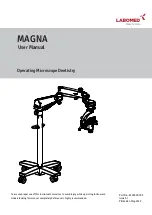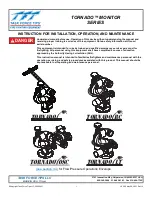
b. RF Power Amplifier (if required)
c. DC Power Supply (if required)
d. Tuned λ/2 Dipole antenna at the test frequencies or broadband biconical antenna
NOTE:
Considering the dimensions for the a tuned λ/2 dipole antenna at lower
frequencies, it is more practical to use a broadband biconical antenna.
5. Required equipment for receive chain of measurement system
a. Spectrum analyzer
b. RF preamplifier (if required)
c. In-line attenuator (if required)
d. DC power supply (if required)
e. Tuned λ/2 Dipole antenna at the test frequencies or broadband dipole antenna
NOTE:
Considering the dimensions for the a tuned λ/2 dipole antenna at lower
frequencies, it is more practical to use a broadband biconical antenna.
6. The transmit and receive antenna must be of the same type for each measurement
3.3.6 Test Frequency
The test frequencies for shielding effectiveness (SE) measurement are defined in
. Test frequencies used must be noted in the RF shield test
report.
3.3.7 Measurement Procedure
NOTE:
Except when specified, antenna distances are measured at the center of the antenna.
1. Each wall of the RF shielded room that is accessible for the measurement will be tested. For
areas that are inaccessible for the direct location of the transmitting antenna, the inside of
that area will still be scanned using the receiving antenna with the transmitting antenna
positioned as close as possible to the intended test position, that position must be noted on
the test report
2. Each accessible plane of the wall is subdivided so that the horizontal spacing is no more
than 1.3 m (4 ft 3 in.) for the Transmit Antenna (TX) and Receive Antenna (RX) horizontal
positions. See the illustration below:
SIGNA Voyager Pre-Installation
Direction 5680008–1EN, Revision 2
160
3 RF Shielding Effectiveness and Ground Isolation
Testing
















































